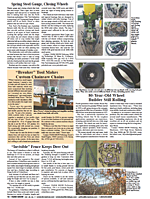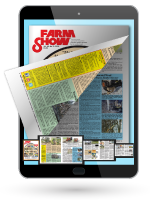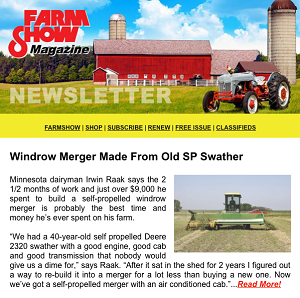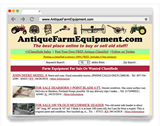You have reached your limit of 3 free stories. A story preview is shown instead.
To view more stories
(If your subscription is current,
click here to Login or Register.)
Precision Tech For Older Farm Equipment
As equipment ages, farmers miss out on the advantages of new technological advances and innovations.
The farm equipment industry has begun offering ways to upgrade older equipment with modern precision ag capabilities.
Features such as auto-steering, automatic shut-offs for sprayers and planters, and end-
..........
You must sign in, subscribe or renew to see the page.

You must sign in, subscribe or renew to see the flip-book
Precision Tech For Older Farm Equipment
As equipment ages, farmers miss out on the advantages of new technological advances and innovations.
The farm equipment industry has begun offering ways to upgrade older equipment with modern precision ag capabilities.
Features such as auto-steering, automatic shut-offs for sprayers and planters, and end-row turn automation boost efficiency and could make sense for many farmers’ return on investment.
Joe Luck, associate director for the Eastern Nebraska Research, Extension and Education Center, says it’s hard to give blanket recommendations because every farm and situation is different, but farm management is all about optimizing inputs.
A 2022 USDA study showed that about 50% of the U.S. corn crop was planted using autosteer. Luck notes that many more farmers might have had the capability.
“Autosteer is embedded in everything and is often a simple activation,” he says. “Some companies have even developed row sensing, which is good for running down mature corn rows.”
Adding these types of features to older tractors could be as simple as triggering a subscription. Logistics support can also be added. Tools like JD Link can manage multiple machines.
Planter upgrades include section controls, electric drives, and metering systems for downforce tools. Sprayer additions also include row or section cutoffs or a weed-targeting system.
Farmers must consider several factors, including the potential need for more power to operate these systems, entry costs, the availability of software upgrades for their specific needs, and the level of dealer support.
When evaluating new technology, it’s important to determine how many acres the equipment will cover, since the total can quickly add up for tractors used in planting, fertilizing, spraying, cutting hay and harvesting. Farmers need to consider how the upgrades will fit with their specific operation.
Upgrading older farm equipment with new technology is a smart way for farmers to leverage their existing assets. It can improve efficiency and save money without needing to buy new machines.
Contact: FARM SHOW Followup, Eastern Nebraska Research, Extension and Education Center, 1071 County Road G, Ithaca, Neb. 68033 (ph 402-624-8000; https://enreec.unl.edu).
To read the rest of this story, download this issue below or click
here to register with your account number.





